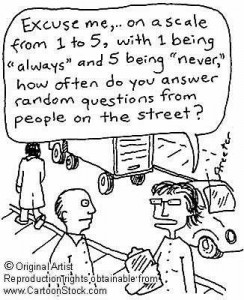Programs Identified check, Piloting underway check, Survey Launch… Imminent.


At the Program Evaluation Division (PED) we are in the middle of phase 2, of the Inventory of state programs for children and youth in North Carolina. Phase one involved identifying the agencies and universities that may have programs that directly target children, youth and their families. This involved contacting over 35 agencies and universities, some of which included the Departments of Commerce, Transportation, Cultural Resources and UNC Chapel Hill. Each contact was supplied with an inventory list, program statute, and confidentiality agreement. PED’s unique confidentiality agreement enables the information they gather to remain…confidential.
Contacting the agencies and universities went fairly smooth. The data we were requesting in the first phase included program name and contact information. Remember that selecting the program name involved targeting programs that fit our project parameters.
As with any data request there are some issues that always seem to come up, these include (but are definitely not limited to) the quality of the data received, missing data, and my personal favorite the case of the delayed data!
Additionally, data may need to be cleaned up. Luckily, for our project most agencies were able to provide exactly what we wanted. In spite of the pre-planning, there were some agencies that had difficulty. One chief concern involved the definitions of what constitutes state/federal funding streams. Because funding sources can be quite diversified and complex there are sometimes no clear differences as funding sources tend to be interspersed. Our efforts yielded 181 state programs that directly benefit children, youth and their families in North Carolina.
Phase two involves the deployment of the survey. Survey Methods and Survey Monkey are some of the standard survey tools available. While these programs offer the software, (please note there are VIP versions of each, which can carry a hefty price tag) survey development takes time, coffee, patience, love, sanity, an eye for design and skill. While some of those are added for comedic effect, survey design does involve utilizing different disciplines. For example, gauging the reader’s psychology helps anticipate their reactions and responses to questions.
Step 1 : Involved distributing the survey to the PED team. This internal review helped garner advice, suggestions and edits. After these were made, we piloted the survey to 10 programs. Five of these programs were housed in the Department of Health and Human Services (DHHS). DHHS had reported over 80 programs in phase one of the inventory. Because of their program knowledge their suggestions and feedback will be invaluable when we make additional modifications to the survey. Other programs selected for the pilot group included the following: the North Carolina Department of Environment and Natural Resources (DENR), Department of Juvenile Justice and Delinquency Prevention (DJJDP), Department of Transportation (DOT), and North Carolina Central University (NCCU).
Next week, we will review the pilot responses and recommended changes, and take appropriate steps to modify the survey. The goal is to have the survey out by the end of next week!
Step 2: Send out the survey. Simple right?
Next weeks blog will be about the focus groups I will attend with PED in Winston Salem for the administrative function of county departments of social services project.


